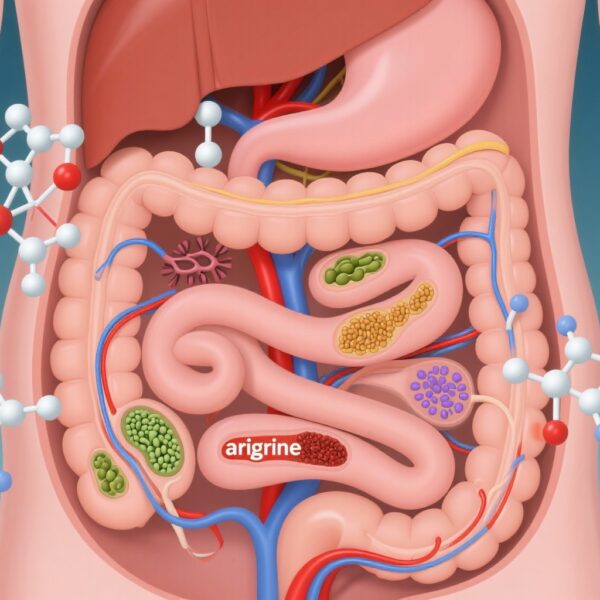Highlight
This multicenter study evaluates the prognostic significance of biochemical response to obeticholic acid (OCA) in primary biliary cholangitis (PBC). Non-responders at 12 months face a significantly higher risk of serious clinical events. Despite increasing response rates over time, high OCA discontinuation rates suggest an unmet need for alternative treatment strategies.
Study Background and Disease Burden
Primary biliary cholangitis (PBC) is a chronic autoimmune liver disease characterized by progressive destruction of intrahepatic bile ducts, often leading to cirrhosis and liver failure. Ursodeoxycholic acid (UDCA) is the established first-line therapy, improving biochemical markers and long-term outcomes. However, up to 40% of patients exhibit biochemical non-response to UDCA, which correlates with elevated risk of liver-related complications.
Obeticholic acid (OCA), a farnesoid X receptor agonist, is approved as a second-line treatment for UDCA non-responders or those intolerant to UDCA. While OCA improves surrogate biochemical endpoints, its impact on long-term clinical outcomes and the predictive value of biochemical response to OCA remain to be clearly defined. This study addresses the knowledge gap by examining whether non-response to OCA predicts higher risks of adverse clinical events in PBC.
Study Design
This retrospective cohort study compiled data from 336 PBC patients initiating OCA therapy between August 2017 and 2019 across high-volume centers in the UK, Italy, and Canada, with follow-up until June 2024. Key inclusion criteria were established diagnosis of PBC and prior UDCA treatment. Cirrhosis was present in 29% of the cohort.
Biochemical response to OCA was assessed at 12, 24, 36, and 48 months using the POISE criteria, which consider alkaline phosphatase (ALP) and bilirubin levels. Clinical events of interest comprised hepatic decompensation, liver transplantation referral, hepatocellular carcinoma development, and death. Discontinuation of OCA and longitudinal biochemical changes were also recorded. Cox proportional hazards models evaluated predictors of clinical events.
Key Findings
Over a total of 851 patient-years of OCA exposure, 45% (150/336) discontinued treatment within 48 months. The number of patients completing the 12-, 24-, 36-, and 48-month follow-ups were 230, 192, 158, and 150, respectively.
Biochemical response rates improved over time from 37% at 12 months to a peak of 63% at 36 months but decreased slightly to 55% at 48 months, indicating some patients’ delayed or transient response. Normalization of ALP occurred in 7%, 14%, 25%, and 19% of patients respectively at these time points (all p < 0.01 vs. baseline).
During the 4-year follow-up, 64 patients experienced one or more clinical events. Twelve-month biochemical non-response was strongly associated with an increased hazard of clinical events (HR: 4.50; 95% CI: 1.74-20.23). Presence of cirrhosis conferred a very high risk (HR: 20.24; 95% CI: 10.15-40.32), followed by hyperbilirubinemia (HR: 2.55; 95% CI: 1.71-3.76). Hypoalbuminemia and thrombocytopenia were inversely associated with event-free survival (HRs close to 0.92 and 0.99 respectively).
After adjusting for confounders in multivariable analyses, both biochemical non-response (HR: 3.29; 95% CI: 1.72-14.96) and cirrhosis (HR: 19.67; 95% CI: 5.09-76.08) remained significant independent predictors of adverse clinical outcomes.
Expert Commentary
This study robustly confirms that biochemical response to OCA is a clinically meaningful prognostic biomarker in PBC, mirroring the role of UDCA responsiveness. The high hazard ratios associated with non-response and cirrhosis emphasize the vulnerability of these subgroups to progression and liver-related morbidity.
From a mechanistic standpoint, OCA acts by modulating bile acid homeostasis and inflammatory pathways, which may differ in effectiveness depending on disease stage and individual patient phenotypes. The increasing response rates over time suggest some patients benefit from prolonged therapy, though nearly half discontinued OCA by 4 years, highlighting tolerability or other issues.
Compared to prior clinical trials, this large real-world dataset supports the translational value of biochemical markers but also exposes gaps such as limited therapeutic options beyond OCA. New agents, possibly combining mechanisms or targeting fibrosis more directly, are needed. The evolving landscape of PBC treatment calls for incorporation of dynamic biochemical monitoring alongside clinical risk stratification.
Limitations include the retrospective design and potential selection bias inherent in tertiary center cohorts, though the multinational scope enhances generalizability. Future prospective studies and randomized controlled trials should validate these findings and investigate novel treatments for non-responders.
Conclusion
Biochemical non-response to obeticholic acid in PBC is a strong predictor of increased risk for serious clinical events, including hepatic decompensation and mortality, particularly in patients with cirrhosis. While OCA improves liver biochemistry in many patients over time, substantial treatment discontinuations highlight the ongoing unmet need for more effective and tolerable therapies. Monitoring biochemical response remains a vital tool for risk stratification and guiding management decisions in PBC. Ongoing research should focus on identifying new therapeutic strategies for those who fail to respond biochemically to current treatments.
References
Abbas N, Smith R, Lytvyak E, et al. Non-Response to Obeticholic Acid Is Associated With Heightened Risks of Developing Clinical Events in Primary Biliary Cholangitis. Aliment Pharmacol Ther. 2025 Sep 22. doi: 10.1111/apt.70378. Epub ahead of print. PMID: 40977287.
Lammers WJ, Hirschfield GM, Corpechot C, et al. Development and Validation of a Scoring System to Identify Patients With Primary Biliary Cirrhosis Who Respond to Ursodeoxycholic Acid. Gastroenterology. 2015;149(7):1804-12.e4.
Corpechot C, Chazouillères O, Poupon R. Early Primary Biliary Cirrhosis. Semin Liver Dis. 2009;29(1):118-26.
Fried MW, Navarro VJ, Ahn J, et al. Phase 3 Study of Obeticholic Acid for Primary Biliary Cholangitis. N Engl J Med. 2016;375(7):631-43.


